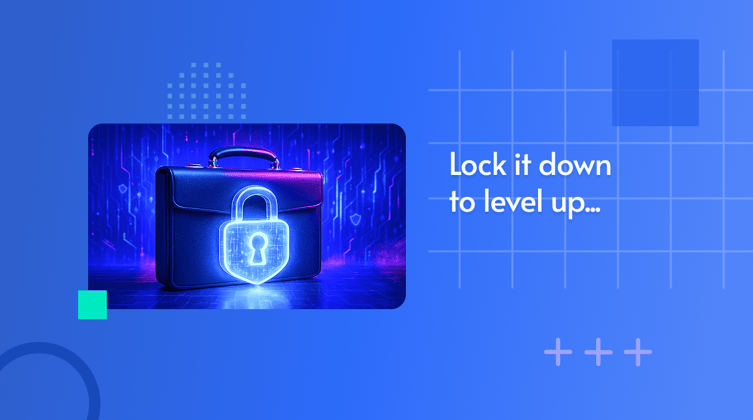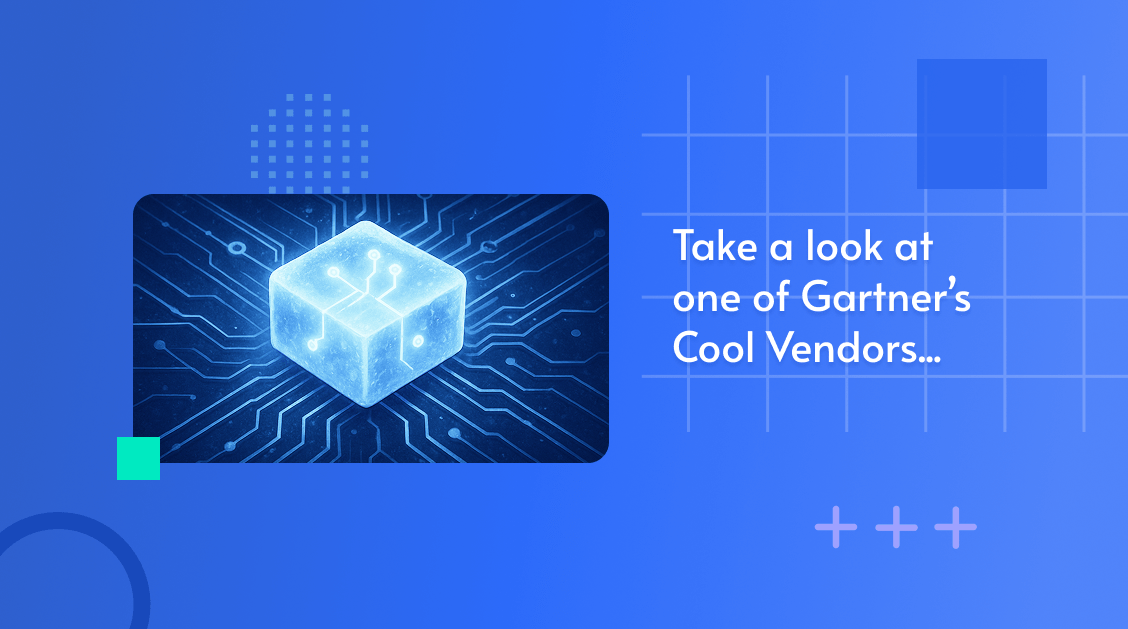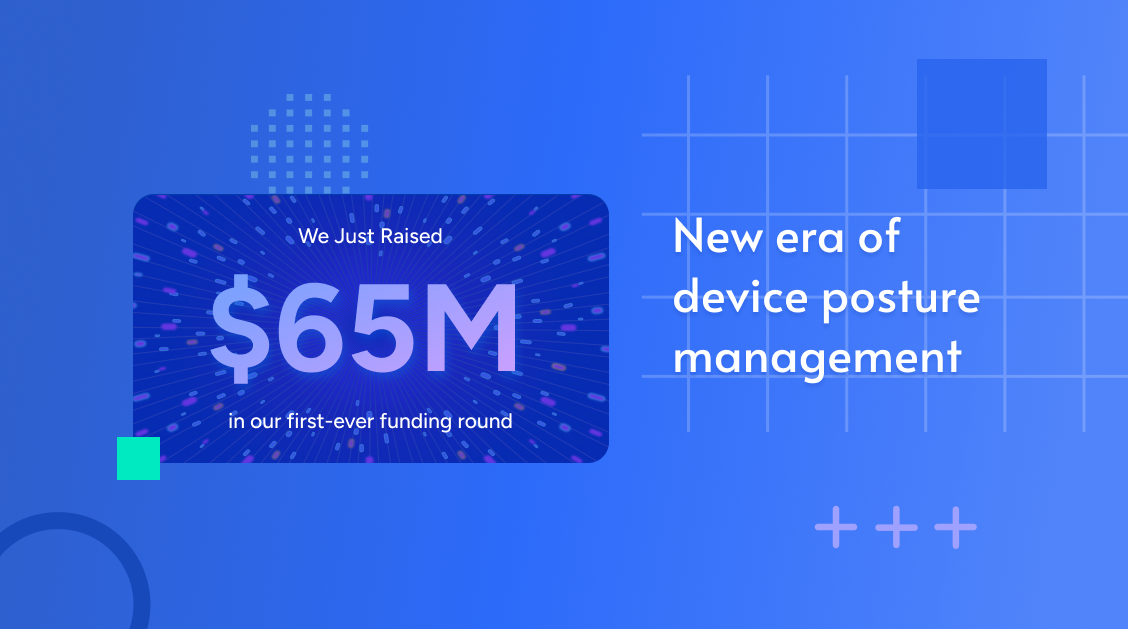Security leaders invest heavily in the front door: phishing defenses, malware de...
Why Business-Aligned Cybersecurity Starts With Smart Configurations

Is good security good business? When something goes wrong, it’s easy to draw the connection: bad security leads to breaches, downtime, and damage. But what if catastrophe isn’t looming?
What if the systems are quiet, the alerts are off, and everything seems fine? In that case, do strong security practices still create business value? At first glance, the question might seem philosophical — but for security leaders tasked with justifying budget and building support, it’s anything but theoretical.
When it comes to winning executive sponsorship and board buy-in, the deck is pretty much always stacked against security stakeholders. As the old saying goes, you can't manage what you don't measure.
And naturally, you can't measure what doesn't happen. Unfortunately for security leaders, their job is all about making sure things don't happen. Which also means, their impact is really only ever felt — at least in a measurable way — when they fall short. So when it comes to forward planning, where ROI is at the top of the agenda, security generally takes a backseat. It's unsurprising then that when board directors were asked to rank the quality of presentations, they gave CISOs the worst rating.
But what if security initiatives could show impact beyond non-events? Well, that could change the strategic calculous entirely.
There's the cyber insurance side of things, of course, where good posture and smart tooling can help reduce premiums, but let's go a little deeper. Lets talk about the practices and processes at the heart of conscientious security programs.
How do they impact the business?
From Cyber Strategy to Operational Enablement
Security takes many forms and intersects with the business in many ways. So in addition to providing protection, each layer of defense has the potential to improve resilience, drive greater operational efficiencies, and boost productivity.
Aligning cybersecurity with business risk means shifting from talking about vulnerabilities or platforms to talking about financial loss, operational disruption, and strategic risk. A DDoS attack, for example, isn't just a spike in traffic — it’s a risk to customer trust, service uptime, and revenue continuity.
What’s the potential impact if this GPO fails? What would it cost the business if these encryption settings drift out of compliance? How many endpoints have insecure defaults that could enable lateral movement during a breach?
But beyond the shifting language and frame, if the goal is bringing cyber interests and business interests together, we can and we must go further.
After all, cybersecurity is all about improved oversight and management across organizational systems and technologies. And better oversight yields greater accountability yields faster, tighter feedback loops on the path to continuous improvement.
Going even further, good security practices also root out human error and introduce automation. And those benefits are not limited to security. They help business leaders streamline operations and better align efforts across departments — freeing staff from constant firefighting and ensuring they're not working at cross-purposes.
And when prioritization is automated and risk-informed, those cross-functional efforts become more targeted. Teams can quickly understand which issues require escalation, which can be safely deferred, and how remediation plans align with business-critical outcomes.
Take Remote Desktop Protocol (RDP) as an example. It’s a known attack vector for ransomware, and an absolute minefield when it comes to navigating the competing interests of Security and Operations.
Faced with the risk, decision-makers are stuck with two bad choices:
-
Ignore the issue to preserve functionality — and operate in a state of persistent exposure
-
Take action — and risk breaking a dependency that could impair workflows
It's a common dilemma and a real damned if you do, damed if you don't. The first option harms security and the second option harms the business. But smart security solutions are designed to track and take dependencies into account. In so doing, they're not only able to limit exposure, but ensure that the business keeps humming.
Of course, there's a third option not listed above. You could launch an investigation to understand exactly what patching or mitigating the vulnerability would mean for any interconnected dependencies. If operability would be broken, it would also require a workaround to restore functionality.
It's an option that's considerably less common because of how resource intensive it is. That is unless you have a tool you can put to the task. Remedio, for example, spares you the investigation — conducting the analysis automatically and in real-time to pinpoint any possible breakpoints and guide your next steps.
But good cyber oversight doesn't stop there. Live dashboards and automated reporting are crucial for operational enablement and visibility. Rather than tracking changes manually or reacting after the fact, teams get immediate insights into drift, noncompliance, or misaligned configurations. Then, they can correct course confidently, before damage is done.
And if, for any reason, something still goes wrong, good cybersecurity tools can be used to help quickly reverse any changes and get back on track. In Remedio, we refer to this combination of capabilities as "safe remediation", but in truth it's really just smart change management and business-aware systems management.
In a larger sense, automating so much of the security lifecycle removes many of the bottlenecks common to everyday workflows. It also replaces error-prone manual upkeep with consistent, policy-driven execution that scales with the business.
Best of all, cybersecurity solutions are remarkably effective at dealing with whack-a-mole issues; the sorts of things that keep popping back up in one form or another after they've been handled.
For example, TLS 1.0 might have been systematically disabled as part of a hardening project and then later re-enabled by a third-party software update. Remedio helps prevent situations of these sorts through continuous policy validation — not once, but always. With consistent settings and automated enforcement in place, fixes hold.
And that type of continuous monitoring and enforcement assurance benefits the whole business. Notably, it affects IT and Operations — allowing them to focus on higher-impact goals, strategic projects, and forward planning. In fact, across Remedio deployments, for example, our customers have seen IT productivity increase by 22%, on average.
Breaking Silos: Sharing Perspective and Priorities
True efficiency means breaking down silos and improving cross-departmental communication and collaboration. A great place to start is with a shared frame of reference. And security tools are famously good at providing accurate, comprehensive, granular, timely visibility. If you're looking for a shared frame of reference, look no further.
.png?width=689&height=172&name=business-aligned-cybersecurity-quote%20(1).png)
In many organizations, IT, Security, and Operations function in parallel — each responsible for different aspects of system health. But their challenges often converge. Consider configurations as an example. When vital settings don't get the attention they require, Security may see a compliance issue, while IT sees a failure of controls, and Ops sees performance issues.
Smart configuration security tools — like Remedio — provide a shared source of truth, helping teams:
-
Collaborate on remediations without finger-pointing
-
Standardize baselines to reduce miscommunication and tribal knowledge
-
Prioritize actions based on risk to the business, not just raw alert volume
This de-siloed approach enhances velocity and trust. IT can reduce support time and manual rework. Security can improve policy adherence. And Operations can ensure uptime and continuity — all while pulling from the same data.
Prioritization based on risk and business impact ensures that attention, resources, and budget are directed where they matter most — toward high-stakes issues that pose a tangible threat to operations, compliance, or reputation. This means identifying not just what’s misconfigured, but what’s exploitable, what’s exposed, and what would be most costly if left unaddressed — whether in terms of downtime, data leakage, or regulatory penalties.
The result is smarter, faster decision-making — and a security strategy that aligns tightly with business objectives.
By reframing configuration enforcement as a means to quantify and reduce financial risk, security leaders can elevate the conversation — not just among peers in IT and security, but with the CFO, CIO, and board. Instead of just asking for budget, they’re showing the business what it buys: less uncertainty, less exposure, and smarter prioritization.
Complying With Regulatory Standards
Frameworks like NIST 800-53, CIS Controls, ISO 27001, and PCI-DSS rely on secure configuration management to reduce risk. A well-structured process helps maintain standardized settings and block unauthorized changes, keeping regulatory bodies satisfied and eliminating the guesswork of compliance.
Somewhat ironically, adhering to the strictures of a given regulation isn’t usually the hardest part of compliance. That distinction belongs to the process of demonstration.
To make regulations enforceable, there need to be penalties for non-compliance. But with anything complex, it’s neither quick nor easy to tell with certainty if compliance was met, and you’ll understand if regulators are reluctant to simply take your word for it. Instead, there’s an auditing process.
Just like if you were audited by the IRS, the speed and ease of the process depends in large part on your bookkeeping. If you keep clear and comprehensive records, you can simply hand them over and wipe your hands of it. If you were lax in your record keeping, you’re going to be in for a world of pain retroactively reconstructing a granular account of your financial dealings.
The same principle holds for all compliance requirements. An applicable monitoring and management solution puts the proof in the pudding and makes compliance demonstration simple. With Remedio, for example, you can produce an organized change history and audit trail in just a few clicks.
Even better, those audit trails reflect not just activity, but intelligent prioritization — showing that the organization focused its efforts where the potential business impact was highest. This strengthens the case with regulators, proving that security decisions are grounded in operational and risk-aware logic.
That not only saves time and energy, but could also help prevent costly fines.
Beyond Protection: The Advantage of Business-Aligned Cybersecurity
Cybersecurity leaders don’t just need visibility — they need to express that visibility in a language the business understands. Frameworks like FAIR (Factor Analysis of Information Risk) offer a model for estimating cyber risk in terms of probable financial loss rather than vague threat levels or color-coded dashboards.
In this model, a misconfiguration isn't just a policy gap — it’s a factor in a potential loss event. It’s not just about knowing whether you’re vulnerable. It’s about being able to ask: what’s the financial risk of this configuration gap if left unresolved — and how cost-effective is the control I apply to fix it?
At Remedio, we help organizations turn smart configurations into strategic advantages — reducing risk, increasing agility, and giving teams the freedom to focus on what’s next.
In the words of Nemi George, CISO and VP IT at Pacific Dental Services (PDS):
"Remedio has given us the ability to build forward with clarity, speed, and confidence. We no longer are forced to slow down at every bump in the road. Instead, every moment of every day, things are being pushed forward.”
PDS's experience is a testament to how operational maturity enables IT leaders to move beyond reactive firefighting and engage in strategic planning. With effortless control over cyber hygiene and cross-platform consistency, IT and security leaders are positioned as essential voices in executive decision-making, particularly when it comes to infrastructure planning, risk management, and organizational resilience.
To make that impact even clearer, Remedio includes a built-in ROI calculator that tracks exactly how much time has been saved across remediation, compliance enforcement, and operational upkeep. It then translates those time savings into a dollar value, based on full-time employee (FTE) cost estimates.
This gives IT and security leaders a real-time, quantifiable view of their efficiency gains — making it easier than ever to demonstrate the business value of good cyber hygiene.
Ultimately, the path to business-aligned cybersecurity is paved with clear communication, real-time control, and risk-aware decision-making. When security technologies, processes, and practices are approached and leveraged accordingly, then yes, good security absolutely is good business!
About Author

Linda Ivri
Fueled by curiosity, Linda is a senior marketer who thrives on decoding the complex challenges where cybersecurity meets business operations.
Subscribe to
our Newsletter
We are ready to help you until and unless you find the right ladder to success.
Related Posts
Join over 25,000 in beating the failure of strategies by following our blog.
If a threat falls in the SOC and no one ties it to revenue, does it really make ...
7 minute read
Picture the legendary Metropolitan Opera House on opening night. The air hums wi...
6 minute read
In cybersecurity, the smallest missteps can lead to the biggest breaches. Take B...








Comments